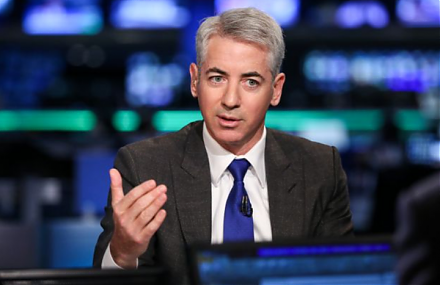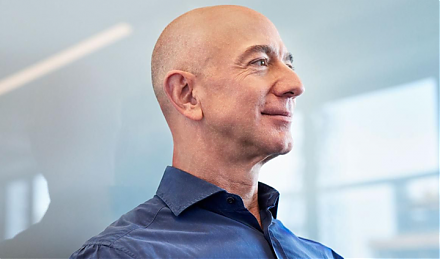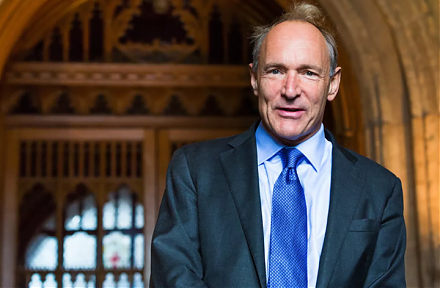

2020-09-03 10:26:00 Thu ET
stock market lean startup distinctive capabilities team dynamism leadership competitive advantages team leaders iterative continuous improvements culture changes perseverance resilience agility senior managers execution business model dual transformation strategic solutions tactical solutions stock return s&p 500 blue ocean product-market fit
Agile business firms beat the odds by building faster institutional reflexes to anticipate plausible economic scenarios.
Christopher Worley, Thomas Williams, and Edward Lawler III (2014)
The agility factor: building adaptable organizations for superior performance
The hard truth is that most business organizations cannot survive past the first 5-year milestone. The rate of change accelerates across the board, and globalization poses even more challenges for most business organizations. Darwinian survival of the fittest equally applies to business organizations that often need to battle the broader inhospitable environment. Only a few business organizations can manage to beat the odds and so consistently outperform their competitors. These business organizations become more agile, anticipate plausible economic scenarios, and so develop quicker institutional reflexes over time.
Business agility cannot be a static condition that corresponds to some steady state. Instead, this agility is a set of institutional approaches that can collectively help the business organization avoid becoming too rigid and then out of touch with the wider world of both corporate innovation and sustainable profitability. In this positive light, business agility requires continuous adaptation. Effective corporate strategies for most agile business organizations involve realistic project commitments, resource allocations, flexible business models, and what-if and worst-case scenarios.
At the early stage, most business organizations must strive to recognize business opportunities, threats, and even chronic challenges. It can often be beneficial for most business organizations to cope with both structural and incremental changes in the wider business environment. Sometimes external forces and conditions such as new niche market entrants and regulations can deter organic business growth. From time to time, most business organizations that consistently outperform peers and competitors understand how their own distinctive capabilities, rare skills, and core competencies etc meet specific customer demands, needs, and wants. Core business leaders learn, discern, and perceive pertinent institutional knowledge and information to monitor external changes and competitive forces with both prescient insights and practical action plans. Through several tests, trials and tribulations, or iterative continuous improvements, business leaders and decision-makers identify the best corporate strategies and solutions in response to both external forces and customer demands. Over time, most agile business organizations repeat, reiterate, and reinforce this positive feedback loop of dual transformation in pragmatic ways.
On the one hand, these business organizations must focus on applying proprietary methods to perform most critical functions in-house. On the other hand, the same companies must keep overhead costs low by outsourcing some non-core business functions. As these business organizations phase out a major dual transformation, new proprietary methods help perform the critical business functions in-house in a more efficient manner when the core operational business processes help perform at least some of the non-core business functions in a more cost-effective way. This dual transformation helps incubate hybrid disruptive innovations through the well-known business lifecycle.
Agile business firms are patient and rigorous to achieve sustainable profitability.
Few companies manage to outperform their competitors on a regular basis. Some companies enjoy successful runs for a few years before their business prospects deteriorate due to both structural and incremental changes in the broader business context. Also, several other companies seem to get caught in boom-bust business cycles that often prevent these companies from achieving sustainable profitability. A few successful companies periodically undertake radical reorganizations in order to beat the odds despite fierce competition and economic policy uncertainty.
Fundamental organizational shifts can result from a wide variety of factors such as changes in senior leadership and management, technological advances, or some unique business innovations. Some of these transformative events often serve as one-time quick fixes that renew the main corporate strategies in several years. This calculus causes institutional upheavals and so entails a great deal of risk. Although these quick fixes may generate some favorable press, they cannot result in longer-term success and steady organic business growth.
At the same time, some agile business organizations manage to quietly outperform their competitors through continuous adaptation to both structural and incremental changes in the broader business context. Such structural and incremental changes often manifest in the form of new blue-ocean markets, customer demands, as well as technological advances. These agile companies either move fast to seize fresh business opportunities or adopt holistic solutions to address emergent threats and even chronic problems. In a fundamental view, these agile companies consistently accomplish these missions well in advance of their competitors. From time to time, agile companies carefully consider the delicate balance between commitment and flexibility.
A common benchmark for corporate valuation is shareholder return performance against the market or S&P 500, but this benchmark falls short when we focus on the long-term enterprise valuation and performance. A better operational measure involves comparing individual corporate performance to the industry-wide standard of cash profitability during the baseline time frame. It is essential for both business leaders and senior managers to assess corporate equity valuation and profitability amid substantial economic and technological turbulence. By this alternative metric, we can attribute business success to the corporate agility factor.
Corporate agility is the distinct dynamic capability for the lean enterprise to institute significant positive organizational changes and iterative continuous improvements at the right time. These positive changes often yield clear competitive advantages for the lean enterprise. Through this dynamic process, the lean enterprise defines clear and inspirational corporate missions and strategies with both long-term focus and commitment. Visionary business leaders can often convey the long-term vision and social purpose through these corporate missions and strategies. Further, both business leaders and senior managers learn, perceive, and monitor both changes and signals in the broader environment. These leaders often need to communicate core values and perceptions fast enough to embed prescient business insights into the major corporate decisions such as M&A deals and new R&D projects etc.
The agile lean enterprise runs several trials and experiments to test hypotheses or conjectures. These experiments help facilitate iterative continuous improvements over time. It is important for the agile lean enterprise to conduct these tests before the senior management team fully commits to any significant changes. At any rate, both business leaders and senior managers must verify the actual benefits of both sustainable and disruptive innovations. In effect, the agile lean enterprise can take incremental steps toward new project completion in a reasonable time frame.
With distinctive capabilities, the agile lean enterprise is less rigid and more creative, aims not to emulate the best competitors, and often sets itself apart from the crowd. This agile lean enterprise tends to rely on the collective wisdom of both team efforts and decisions. These team efforts and decisions often reflect the central tendency for business leaders to radically differentiate the agile lean enterprise from the rest. In the typical agile lean enterprise, business leaders tend to tolerate greater project complexity and ambiguity, but simultaneously focus on both tactical and strategic solutions in light of multiple medium-term considerations.
Agile business strategies often reflect the fundamental corporate culture and social identity amid intense competition and economic policy uncertainty.
Most effective corporate strategies express the fundamental corporate culture and social identity as well as the current approach to building up distinctive capabilities and competitive advantages over several other peers. The agile business firm can share institutional knowledge such as corporate history, social identity, and several other core competences that connect past wins to future accomplishments. From time to time, this social identity must match the bold goal and purpose of business existence over the long run. When business decision-makers connect the dots, the agile lean enterprise can provide superior products and services to meet customer demands in new niche blue-ocean markets.
The agile lean enterprise often develops effective corporate strategies in terms of at least 3 dimensions. First, the agile lean enterprise has to maintain a sufficiently broad array of complementary products and services to sustain the product-market fit. Both business leaders and senior managers need to focus on new niche parts of the broader blue-ocean market before the agile lean enterprise takes over bigger slices of the same industry. Second, senior business decision-makers often assess the trade-offs between acceptable risk and the speed of execution. The agile lean enterprise moves fast to challenge the status quo. At the same time, however, this agile lean enterprise must strive to minimize risk to some reasonable range. Third, the agile lean enterprise often needs to differentiate its core products and services from all the other close substitutes. Core competences, distinctive capabilities, and even disruptive innovations become multiple considerations. Sometimes the agile lean enterprise attempts to combine product differentiation with cost leadership to attain robust competitive advantages.
Both business leaders and senior managers learn, perceive, discern, and observe structural trends, fundamental reforms, and incremental changes in the business environment. With firm commitment, the agile lean enterprise collects, shares, and assesses relevant information that helps business leaders make fruitful decisions. Effective corporate strategies are rational and analytical in nature; in stark contrast, most organizational cultures and perceptions are more emotional and often stir up strong views and opinions. Business decision-makers, senior managers, and their team members sense and monitor several facets of both internal team interactions and external forces and conditions. All relevant team members must move fast to communicate key information to the right people at the right time in the right place. Both business leaders and senior managers must understand this key information with the right interpretations in the specific context of corporate strategies such that the response accords with the longer-term business vision. When push comes to shove, the law of inadvertent consequences counsels caution.
Most agile business firms often go through many tests, trials and tribulations, and iterative continuous improvements over time.
It would be better for team members to test an idea or a prototype on a small scale before both business leaders and senior managers allocate massive resources to a new project (only to see it fail miserably). The agile lean enterprise can test many ideas via a series of scientific experiments and then should let the key results guide most managerial decisions. Key tests and experiments can be narrow or broad in scope. It is essential for business decision-makers to learn from most experiences by asking the right questions. These questions often shine light on whether longer-term success arises from techy product design, service innovation, or team project execution. If a new idea or a prototype works well on a small scale, both business leaders and senior managers can scale up core business operations to a full-blown rollout. The agility factor can often boost an increase in operational scalability.
Even if a new idea shows great promise, the agile lean enterprise must still weigh the potential benefits of moving forward against the current benefits of core extant operations. Execution differs from team implementation: the former focuses on the iterative continuous improvements of core extant operations; in contrast, the latter focuses on learning prescient business insights and methods from new team work streams. Most business leaders often need to maintain a delicate balance between both current and future teamwork streams with the free flows of team resources in mutual ways. Both business leaders and senior managers should provide sufficient incentives to all the team members who drive, manage, and oversee new changes to bear responsibility for the key results. This accountability mechanism often helps ensure the dual transformation of real options into proprietary assets with new cash flows and income streams.
Business agility often arises from the quality of organizational personnel. It should be permissible for creative team members to make mistakes in order to learn from these mistakes, trials and errors, and even epic failures. Otherwise, these creative team members would choose to quit. All the other team members may be good at obeying orders, but these people cannot offer the kind of long-term creative vision for continuous adaptation. Overall, business leaders often learn to pull together all team dynamism to accord with the long-term vision and purpose of core business operations. The ultimate agility factor can often arise from the seamless integration of both team efforts and cross-functional synergies. Interactive collaborations and iterative continuous improvements become possible in this context.
This analytic essay cannot constitute any form of financial advice, analyst opinion, recommendation, or endorsement. We refrain from engaging in financial advisory services, and we seek to offer our analytic insights into the latest economic trends, stock market topics, investment memes, personal finance tools, and other self-help inspirations. Our proprietary alpha investment algorithmic system helps enrich our AYA fintech network platform as a new social community for stock market investors: https://ayafintech.network.
We share and circulate these informative posts and essays with hyperlinks through our blogs, podcasts, emails, social media channels, and patent specifications. Our goal is to help promote better financial literacy, inclusion, and freedom of the global general public. While we make a conscious effort to optimize our global reach, this optimization retains our current focus on the American stock market.
This free ebook, AYA Analytica, shares new economic insights, investment memes, and stock portfolio strategies through both blog posts and patent specifications on our AYA fintech network platform. AYA fintech network platform is every investor's social toolkit for profitable investment management. We can help empower stock market investors through technology, education, and social integration.
We hope you enjoy the substantive content of this essay! AYA!
Andy Yeh
Chief Financial Architect (CFA) and Financial Risk Manager (FRM)
Brass Ring International Density Enterprise (BRIDE) ©
Do you find it difficult to beat the long-term average 11% stock market return?
It took us 20+ years to design a new profitable algorithmic asset investment model and its attendant proprietary software technology with fintech patent protection in 2+ years. AYA fintech network platform serves as everyone's first aid for his or her personal stock investment portfolio. Our proprietary software technology allows each investor to leverage fintech intelligence and information without exorbitant time commitment. Our dynamic conditional alpha analysis boosts the typical win rate from 70% to 90%+.
Our new alpha model empowers members to be a wiser stock market investor with profitable alpha signals! The proprietary quantitative analysis applies the collective wisdom of Warren Buffett, George Soros, Carl Icahn, Mark Cuban, Tony Robbins, and Nobel Laureates in finance such as Robert Engle, Eugene Fama, Lars Hansen, Robert Lucas, Robert Merton, Edward Prescott, Thomas Sargent, William Sharpe, Robert Shiller, and Christopher Sims.
Follow AYA Analytica financial health memo (FHM) podcast channel on YouTube: https://www.youtube.com/channel/UCvntmnacYyCmVyQ-c_qjyyQ
Follow our Brass Ring Facebook to learn more about the latest financial news and fantastic stock investment ideas: http://www.facebook.com/brassring2013.
Free signup for stock signals: https://ayafintech.network
Mission on profitable signals: https://ayafintech.network/mission.php
Model technical descriptions: https://ayafintech.network/model.php
Blog on stock alpha signals: https://ayafintech.network/blog.php
Freemium base pricing plans: https://ayafintech.network/freemium.php
Signup for periodic updates: https://ayafintech.network/signup.php
Login for freemium benefits: https://ayafintech.network/login.php
If any of our AYA Analytica financial health memos (FHM), blog posts, ebooks, newsletters, and notifications etc, or any other form of online content curation, involves potential copyright concerns, please feel free to contact us at service@ayafintech.network so that we can remove relevant content in response to any such request within a reasonable time frame.
2019-07-27 17:37:00 Saturday ET

Capital gravitates toward key profitable mutual funds until the marginal asset return equilibrates near the core stock market benchmark. As Stanford finance
2018-06-29 11:41:00 Friday ET

Amazon acquires an Internet pharmacy PillPack in order to better compete with Walgreens Boots Alliance, CVS Health, Rite Aid, and many other drug distributo
2018-11-03 11:36:00 Saturday ET

Apple adds fresh features to its new iPad Pro and MacBook Air in addition to its prior suite of iPhone XS, iPhone XS Max, and iPhone XR back in September 20
2019-07-25 16:42:00 Thursday ET

Platforms benefit from positive network effects, scale economies, and information cascades. There are at least 2 major types of highly valuable platforms: i
2018-11-09 11:35:00 Friday ET

The Internet inventor Tim Berners-Lee suggests that several tech titans might need to be split up in response to some recent data breach and privacy concern
2019-07-13 07:17:00 Saturday ET

Japanese prime minister Shinzo Abe outlines the main economic priorities for the G20 summit in Osaka, Japan. First, Asian countries need to forge the key Re